Kovalenko: Russia can fight for another 10 years, but the devil is in the details. Breakdown of the occupiers' "pain points"
 Alexander Kovalenko
War
Alexander Kovalenko
War
21.07.2024 07:00
This week, Western experts published an analysis that created a lot of noise in the information space, since it spoke
of Russia's intention to fight Ukraine for another 10 years - until the complete destruction of Ukrainian statehood . But, as they say, to want is not to do. So let's figure out whether
the aggressor country has the ability to fight for so many years .
Before looking deeper into this issue, I will note that experts began to draw such conclusions after the statement by the Deputy Chairman of the Russian Security Council Dmitry Medvedev. It is strange that in the third year of a full-scale war, Western analysts continue to pay attention to the words of such a character, given his absurdity and inadequacy.
On the other hand, in parallel with this, an article was published in The Economist, which, in a rather condensed form, compared
to my material from June 4, 2024 , described that Russia will already be experiencing an acute shortage of equipment in 2025, since warehouses and storage centers in the Russian Federation are empty. A very important nuance -
the Russian occupation forces are already experiencing a shortage, and in 2025 it will become critical and will radically affect the degree of supply of troops with a mechanized component.
Thus, we have two mutually exclusive materials from Western analysts: one says that Russia is ready to fight for 10 years, and the other that its resources will be radically depleted by 2025.
To understand who is right, we need to consider
the potential of the Russian military-industrial complex and the possibilities of replenishing the Russian army with both human resources and equipment necessary to continue the war.
Human resource
When talking about human resources in relation to Russia, it is
often claimed that it is infinite. But this is not so , since nothing is infinite. Although, it should be recognized that the potential is extremely large compared to most countries in the world. In addition, Russia's mobilization potential is also affected by its repressive system.
Just the other day I gave an example of
how the loss rate of Russian occupation forces and the area of captured Ukrainian territory changed from 2022 to 2024. Let me remind you of these figures.
2022 year
Personnel: 92,920 (34,550 in the first six months of the war).
Captured: 63.9 thousand km².
2023 year
Personnel – 253,290 (122,150 from January 1 to June 30 – a 3.5-fold increase). Overall, losses increased by 2.7 times over the year.
Captured: 683 km².
2024 (from January 1 to June 30)
Personnel – 183,800 (an increase of 5.3 times).
Captured: 752 km².
In fact, the current offensive of the ROV is estimated
at the loss of one occupier per 2.5-4 m² of Ukrainian territory .
According to the dynamics of the growth of losses, 2024 for the occupation forces may end (provided that the current intensity of military operations remains unchanged) within 400 thousand personnel. That is,
the average indicator of ROV losses per month will stably exceed 30-35 thousand occupiers.
This trend is already forcing Russia to mobilize 35 to 40 thousand people monthly for the war in Ukraine this year. In turn, the limit of the Russian Federation's mobilization system is 60-70 thousand per month, and anything higher overloads it. A striking example is the partial mobilization of 2022, when 100 thousand per month were driven into the ROV.
Thus, even if we take the approximate average annual loss rate of 300 thousand, then
in 10 years the Russian Federation should mobilize 3 million just to compensate for losses 530 thousand ROV personnel are currently involved in combat operations in Ukraine , which must not only be replenished, but also rotated and increased in number. For example, from 2022 to 2024, the composition of the occupation forces increased from 180 thousand to 530 thousand, or three times!
It is possible that the process of increasing personnel will continue and annually another 100-150 thousand Russians will be mobilized to increase the ROV grouping and rotations. That is,
taking into account the average indicator of compensation for losses and other needs, mobilization per year in Russia should provide at least 450 thousand personnel or 37-38 thousand mobilized per month.
Can Russia afford such indicators? Absolutely. But there is a nuance. The fact is that
the indicator of personnel losses directly depends on the level of training and equipment of units . Under such mobilization conditions, the level of training will be critically low, and the level of equipment will only decrease with each... no, not year, but month.
Therefore,
the average figure of 300 thousand losses will inevitably grow while maintaining the current intensity of military operations, which means that the need for mobilization will also grow - gradually but surely approaching the maximum figure of 60-70 thousand per month, without settling at any stable level.
But human resources are not all that determines the ability of the ROV to fight. Let's not forget about equipment.
Military equipment
As I wrote above, The Economist published a generally correct article, but still with certain inaccuracies.
In my article
"Russia has stepped up the buyback of Soviet weapons and equipment around the world. What happened to the stockpiles of its military-industrial complex" I consistently cited examples of
how the potential of the military-industrial complex of the aggressor country is being depleted, and noted that 2024 is a turning point for it - in the negative sense of the word.
The stocks of Soviet
tanks, combat armored vehicles and artillery in warehouses and storage centers are practically exhausted . The worst situation is with MBT and AFV, somewhat better with barrel artillery.
Russia has about a year's worth of main battle tanks to compensate for losses, but there are fewer and fewer that can be repaired. And repair processes now take much more time and energy than in 2022 and 2023. Thus, with each month, Russia is able to transfer fewer and fewer restored tanks to the troops, which in turn reduces the monthly loss compensation rate.
At the beginning of 2024, there remained in Russia:
T-90A and T90S – up to 100 tanks, with the current production averaging 50 tanks per year;
T-72 – about 1,500 tanks of varying degrees of repairability, with no production;
T-80 – about 800 units of varying degrees of maintainability, with no production;
T-62 – up to 600 units, with no production;
T-54/55 – up to 600 tanks of varying degrees of repairability, with no production.
Thus, the total number of tanks stored in a relatively and conditionally repairable condition
was 3,600 units six months ago. At present, of course, there are much fewer of them .
The situation is similar with armored fighting vehicles. Although the production of new ones is better than the production of tanks, the demand for these vehicles is almost three times higher.
Russia's Soviet artillery stockpiles in the categories "commissioned" and "in storage" were approximately as of the beginning of 2024:
D-20 (152 mm) – about 100 (about 1 thousand in storage);
D-30 (122 mm) – about 450 (about 4 thousand in storage);
Msta-B (152 mm) – about 450 (about 550 in storage);
Giatsint-B (152 mm) – about 100 (about 1 thousand in storage);
Self-propelled gun Gvozdika 2S1 (122 mm) – about 400 (about 1.2 thousand in storage);
Self-propelled gun Akatsiya 2S3 (152 mm) – about 700 (about 800 in storage);
Self-propelled gun Giatsint 2S5 (152 mm) – about 150 (about 500 in storage);
Self-propelled guns Msta-S 2S19 (152 mm) – about 400 (about 150 in storage);
Self-propelled gun Pion 2S7 (203 mm) – about 100 (about 100 in storage);
SAMU Nona-S 2S9 (120 mm) – about 300 (about 500 in storage);
SAMU Nona-SVK 2S23 (120 mm) – about 30 (0 in storage);
SAMU Tulip 2S4 (240 mm) – about 30 (150 in storage).
This list did not include the 120-mm mortar type 2B11, the 82-mm BM-37, the 100-mm anti-tank gun MT-12 "Rapira", the divisional gun 85-mm D-44 and others. The "in storage" category indicated the quantity that was approximately suitable for restoration and could be brought to a combat-ready state.
All these figures indicate that
the potential for restoration and compensation of losses in the MBT and AFV categories does not exceed the potential for six months or even less . In
the artillery category, this figure may exceed a year and a half .
In any case, none of these indicators confirm that Russia has the potential to wage war for 10 years -
it will be exhausted, depending on the category, by the end of 2024 and during 2025. This will lead to a decrease in the ability to compensate for losses and, as a result, a deterioration in the situation with the staffing of units, which will entail an increase in losses.
conclusions
Russia can indeed fight for 10 years, but
it only has this capability in the category of human resources. But it does not solve offensive tasks without mechanized support.
The mechanized component itself, which the Russian military-industrial complex can operate, is becoming less and less every month. And if the current intensity of military actions and the level of losses of ROV equipment are maintained,
Russia will not have enough remaining reserves for 10 years .
If Russia really plans to fight for such a period, it will be able to do so
only at the expense of human resources, which will not solve its global problems . Moreover, it is already clear how much the potential of its offensive campaigns in 2023-2024 is sagging and negatively differs from the indicators of 2022.
It is obvious that the process of attrition in 2024 will have a dramatic impact on the capabilities of the ROV in 2025 – not only in terms of offensive capabilities, but also defensive capabilities.
-
The material was published as part of a joint project between OBOZ.UA and the Information Resistance group .
 hoitajat.net
hoitajat.net

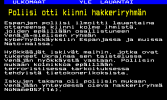





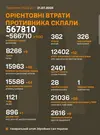
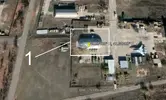
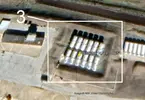

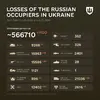
 Return Ukraine to its borders by February 24, 2022, leaving Crimea under Russian control.
Return Ukraine to its borders by February 24, 2022, leaving Crimea under Russian control.


